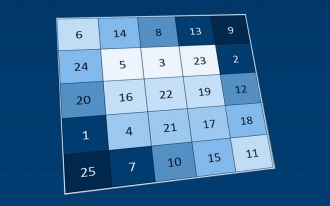- BRAINTRAIN |
- Blog |
- Attention |
- How to Be Attentive

Bogdan Moroz 18.10.2019 9973 Comments
Attentiveness is a coveted trait for any employee, directly boosting productivity and work quality, often saving time for themselves and colleagues. In daily life, an attentive person achieves more and completes tasks better, but inattentiveness isn’t a life sentence—it can be overcome with effort and persistence.
The central nervous system follows logical, consistent rules, so attention training is as natural as gym workouts for physical fitness.
Types of Attention
Though seemingly simple, attention has subtypes based on stimuli and prior training. Despite perceiving everything around us, the brain filters out most stimuli to avoid overload. For example, you stop noticing your perfume’s scent or a watch on your wrist after a while, though sensory signals persist—they’re just blocked from consciousness.
Involuntary Attention
This basic attention type doesn’t rely on prior experience, covering everything around a person. For instance, a car passenger without a license notices road signs without understanding them, drawn by their attention. This depends less on training and more on nervous system reaction speed, influenced by nutrition, micronutrients, and overall thinking development.
Voluntary Attention
Developed through training, this allows noticing elements and understanding their significance. A trained driver notices road signs to glean restrictions or information, not just as objects. Reading in a language works similarly—focus shifts to content. Attention puzzles effectively train this, teaching the brain to prioritize specific objects.
Post-Voluntary Attention
The next stage after voluntary attention, requiring experience and data analysis. With frequent, short-interval repetition, analysis bypasses consciousness, delivering results. An experienced truck driver instinctively adjusts speed in a town without consciously noting signs. A avid reader skims a page yet grasps the narrative. This attention type builds on voluntary attention experience.
General Principles to Boost Attentiveness
Follow these proven, effective rules to succeed in improving attentiveness:
- Use Algorithms for Key Tasks – Break planned tasks into subtasks for focused, thorough processing, training faster, more attentive execution over time.
- Shift Involuntary to Voluntary Attention – Intentionally notice things that naturally catch your eye to train spotting and analyzing details.
- Healthy Diet and Sleep – Overused but vital for nervous system function. Inattentiveness signals fatigue or nutrient deficiencies.
- Avoid Rushing – Processing information takes time. Hurrying reduces focus on details, which are critical in any work.
- Regular Motivation – A stimulus to keep the nervous system engaged. Without it, interest and performance wane.
- Multitasking Is Your Enemy – To develop attentiveness, focus on one task. A valued specialist excels by concentrating deeply, not juggling roles.
- Memory Training – Essential for effective thinking, including attentiveness. Poor memory hinders training results and experience accumulation. See “Types of Memory” for details.
Attentiveness Exercises
Try these simple exercises to significantly improve concentration with minimal time investment.
Missing Object
A classic game to channel Sherlock Holmes’ detail-oriented attentiveness. A helper places multiple objects (more for higher difficulty) on a table. Study them for a minute, then identify which object the helper removes.
Detailed Picture Description
For solo training, study a picture intently, then remove it and write down as many details as possible—objects, colors, sizes, hair length, button counts. This trains noticing and retaining details.
Simultaneous Hemisphere Stimulation
Draw simple, different shapes or letters with both hands simultaneously. Tracking both requires intense concentration, perfect for training.
Hemisphere Conflict
Write color names (red, blue, pink, green) using pencils of mismatched colors. The brain struggles to avoid writing the pencil’s color, demanding focus. Reading the list quickly repeats the exercise, as mismatched colors confuse reading.
Concentration Amid Distractions
Focus on an object for three minutes while a favorite show or song plays in the background. Resist the temptation to shift attention from the object.
Becoming More Attentive in Daily Life
These recommendations will instantly boost attentiveness in routine tasks and productivity:
- Extended To-Do Lists – Include subtasks to break complex tasks into simple steps, enabling quick focus and execution while saving planning time.
- Eliminate Distractions – Remove notifications, music, or social media tabs during tasks to maintain focus and avoid training your brain to wander.
- Set Realistic Timeframes – Time limits motivate and make unappealing tasks bearable by showing a clear end.
- Mandatory Breaks – No rush justifies skipping rest. Overworking the nervous system reduces efficiency and future potential.
- Task Switching – Alternating tasks prevents monotony and re-engages the brain.
- Stay Focused – Even familiar tasks require attention to avoid missing details or changes in requirements.
- Clarify Tasks – Confirm unclear instructions to avoid mistakes, which is less costly than errors.
- Eye Contact in Conversations – Maintains focus and prevents distraction by thoughts or surroundings.
- Sketch Information – Drawing while processing data reinforces retention and speeds understanding.
- Avoid Premature Conclusions – Wait until a conversation ends to form judgments, ensuring you catch all details.
- Work During Peak Productivity – Align tasks with your biorhythms for optimal efficiency.
- Meditation – Practice concentrating amid distractions, a valuable tool for attention development.




